We recently connected with Christina Doelling and have shared our conversation below.
Christina, looking forward to hearing all of your stories today. Are you happier as a creative? Do you sometimes think about what it would be like to just have a regular job? Can you talk to us about how you think through these emotions?
I personally know very few other professional artists, which is telling. It’s a tricky business, and isn’t for everyone. One can’t go from new and inexperienced to successful and profitable overnight, without significant luck and contacts. For most artists, it takes persistence, patience, a huge amount of trial and error, and being realistic with your goals. For me, there have been years that offered fewer opportunities and were less profitable than others; those were the times I sometimes questioned my choices and wondered, should I give it all up, and just get a regular job?
I always circle back to “no”. I worked as a creative in the corporate world until my early 30’s, and honestly, I could never go back to that kind of environment. The structure, the hours, the commuting, the fast pace, the constant sense of urgency and the stress that I felt, would not suit me now. There is more peace for me being an artist. I really enjoy the solitude of working alone. My studio is in my house so I can control my work environment. I like being my own boss, deciding when to paint, and what I want to do. It’s a simpler life, yet far more empowering, being an artist and being responsible for everything that it entails.
One of the most significant benefits is the customizable work-life balance. There are weeks when I work every day and am incredibly productive. However if I need to take a few weeks off to travel or enjoy the holidays, I do. I have learned that it all balances out in the end. When I have a tight commission deadline, or a gallery wants to see all new work quickly, I actually rise under a little pressure, but it’s a relief to know that’s not a daily constant.
Despite some of the challenges, the journey to where I am now has been entirely worth it. I am very grateful that I get to do what I enjoy, and share my art with people. Being an abstract artist might be a slightly unusual job, but I love it.


As always, we appreciate you sharing your insights and we’ve got a few more questions for you, but before we get to all of that can you take a minute to introduce yourself and give our readers some of your back background and context?
I grew up in Europe, and was exposed to beautiful art throughout my childhood. For as long as I can remember, I was always drawing or painting. After graduating from high school in London, I returned to the US and earned my degree in Studio Arts at Skidmore College. While specializing in painting, I fell in love with the freedom and process involved in abstract expressionism. After graduation, I did two more years of art school, and shifted to Art Direction. I worked in advertising agencies in San Francisco and Atlanta for nearly a decade, but I always painted. In 2001 I began working professionally as a painter.
To be honest, I look back on those early paintings and cringe! But gradually, I got better. It took years of creative exploration to discover what kind of art I really wanted to create, and to find my own distinctive style and voice. Even now, it continues to evolve, which I think is healthy and natural.
I am best known for large abstract paintings that have visible texture, lots of movement, energetic brushwork, playful mark-making, and mixed-media elements. I really enjoy painting, and I think people can feel that in my work.
I was chosen as an “Emerging Artist” by Art & Antiques Magazine early on in my career, and mentally, that was a turning point for me. I am also fortunate to have had wonderful, long-term relationships with some amazing galleries across the Southeast, and they have been instrumental in introducing my work to collectors.
What is most fascinating about selling a painting is knowing that I have made an emotional connection with someone. Since all of my paintings are originals, it really is special when that match is made. When a collector tells me that my art makes them happy every time they look at it, there is no greater compliment. Seeing my work in magazines, or featured in showhouses looking amazing, will always be a thrill.
My goal as an artist from the beginning has always been straightforward: to create what I love, and hope that some people may love what I create. Over the years, I have found that this simple goal has kept me focused and grounded.
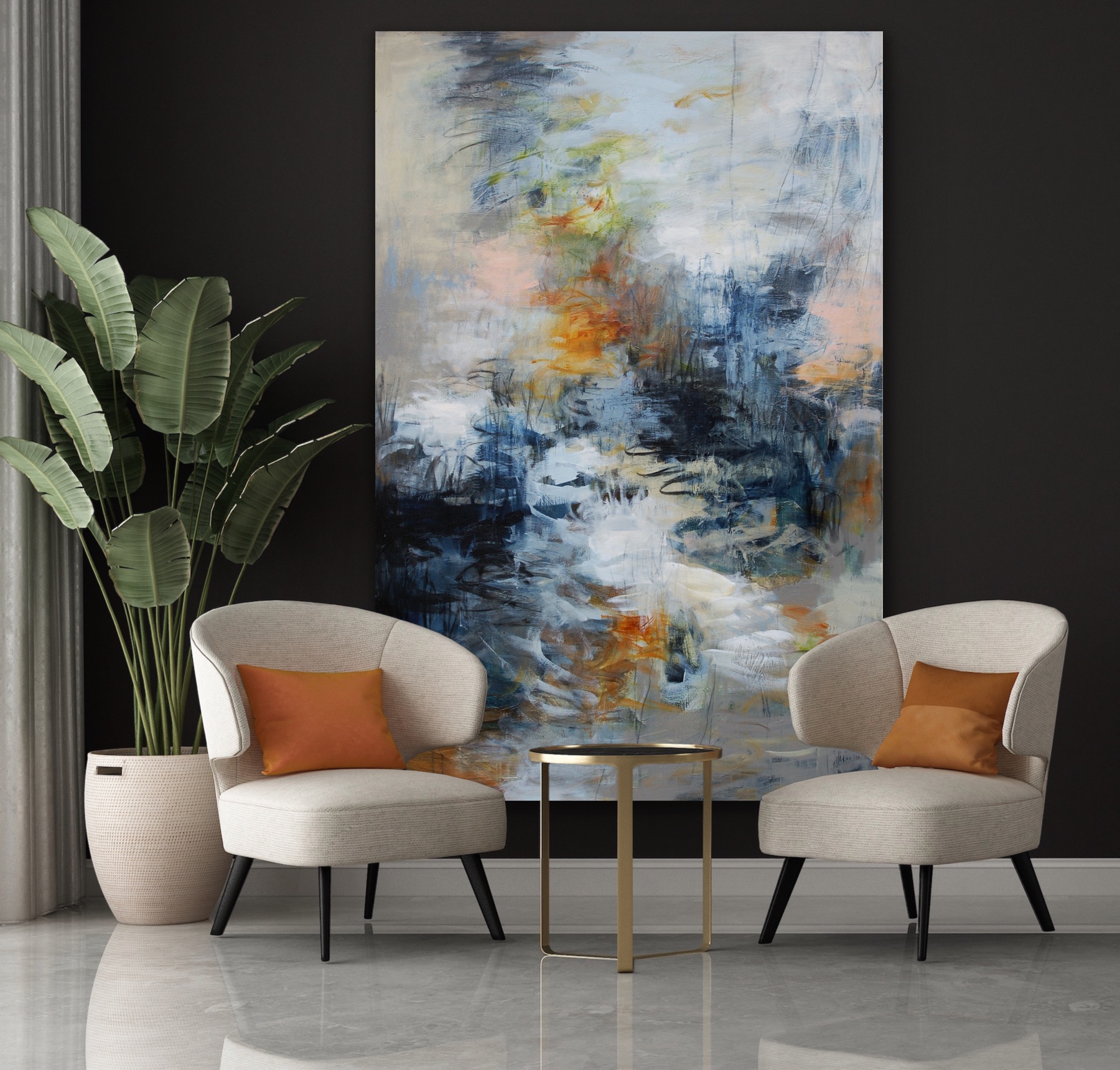
Do you think there is something that non-creatives might struggle to understand about your journey as a creative? Maybe you can shed some light?
The sheer visceral aspect of abstract expressionism can be difficult for non-creatives who have never experienced it to comprehend; but it is at the heart of being an abstractionist, and this creative intangible is what is most intoxicating and fascinating to me. There’s something close to magic that happens when you have paint, a stick of charcoal, a pencil, maybe some oil sticks, and then a few hours later there’s a beautiful painting in front of you. The crazy part? It just gradually emerges on your easel, without much conscious thought. The fun part? The final results are always an incredible surprise. I usually have a rough idea of what I’d like accomplish, but the exact end painting can never be fully predicted because it’s born straight out of the process. Every single time I enter my studio to work, I feel a little rush as I wonder, what’s going to happen on my easel today?
I have often described this phenomena as “when a painting reveals itself”. Sometimes it happens astonishing quickly, other times a cat and mouse game ensues with the canvas, and I have to be patient and wait for it, and work for it. For an abstract artist, this is what the artistic process is all about. Artists who do realism, such as landscape work or portraiture, see the end goal in front of them, and use their brains to analyze, break down, replicate and capture that tangible reality that they see with their eyes (putting their own style and spin into it). Abstract expressionism is total freedom from all of that. It is starting with nothing but a literal blank canvas, and working from the gut, listening to the heart, and working from a place of instincts. It’s about somewhat going on auto-pilot, watching your hands move fast and brushes fly, and instinctively knowing what colors or tools to reach for next, and what that next layer needs. And it’s never, ever, exactly the same. This ability, and the massive amount of trust and confidence one has to give in to the process, comes from years of experience; from years of just doing.
This visceral aspect is what I think of as the abstract artist’s internal engine. When it’s fully firing, it’s a really incredible, satisfying, inspiring experience. (And if it’s not? It’s ok. Get some sleep and come back the next day. Panic and paint don’t mix!)
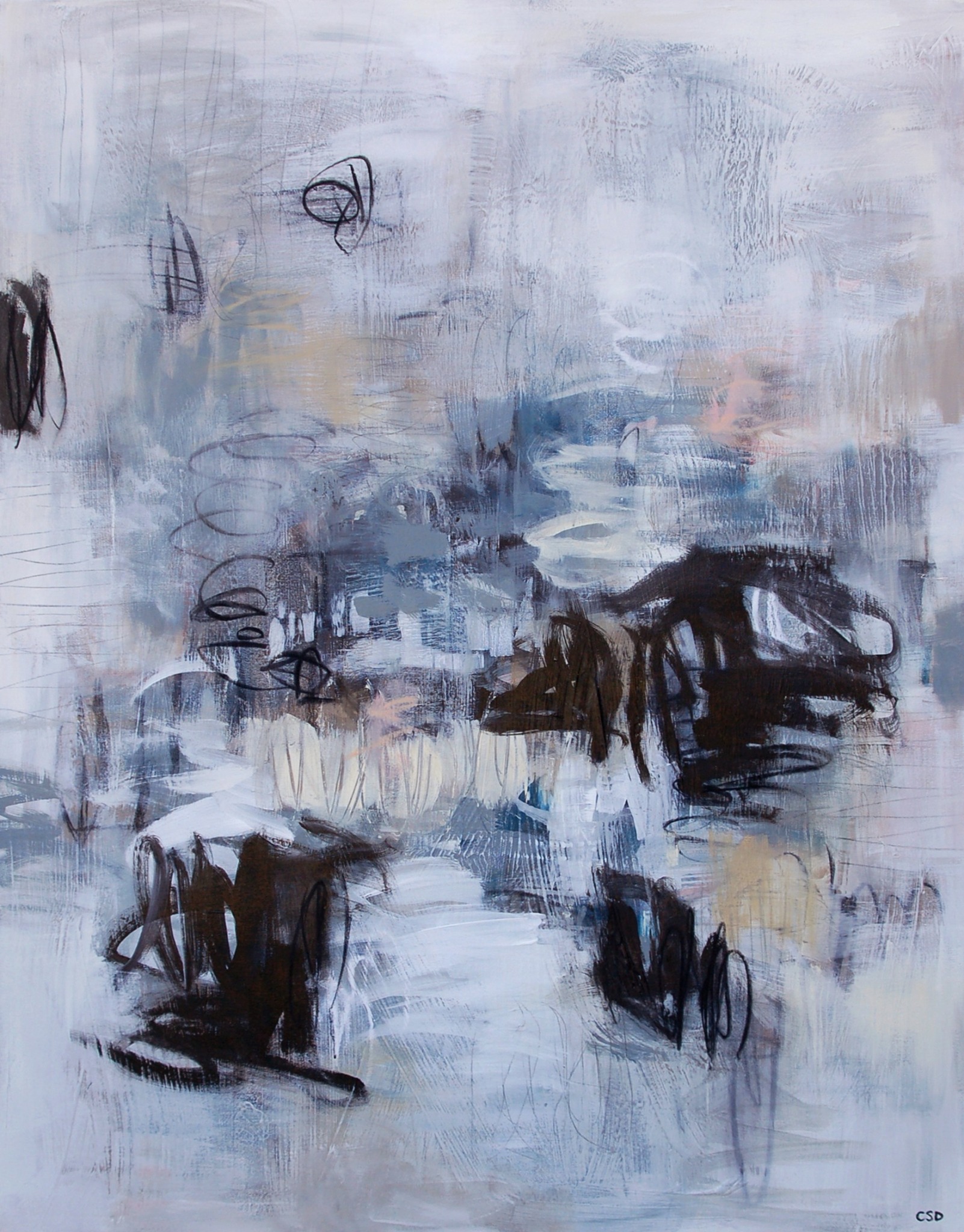
Is there mission driving your creative journey?
I have made it my mission to keep my art evolving, to experiment with the subtleties of how paint and other materials are applied, and to create art that is distinctive with a style of my own.
This mission addresses the technical aspects of creating art. It is how these techniques are implemented that make each artist’s paintings look different from one another.
How the paint is applied is arguably the most important aspect of abstract expressionism. How the paint is applied is what makes a painting appear beautiful, calm, interesting, bold, or exciting to a collector.
For me, these are the most important technical aspects of creating an abstract painting:
• Brushwork: When I paint I transfer a ton of energy into my work, which is usually best seen in the kind of brushstrokes I make. Amazingly, every brush I have leaves a different kind of mark; they really do have their own personality so I usually have a handful while I work and switch often. I use a wet brush for first layers, fuller coverage areas, and a softer look; dry brush for texture, a rougher feel, and partial coverage on the top layers.
• Juxtaposition: I balance areas of action with areas of calmness. Shifting the proportions of this juxtaposition is what makes a painting calm and serene for example, or bold and exciting. That balance often depends on my mood that day.
• Layers: Lots of layering goes into all of my canvases, and I allow parts of the underpainting colors and marks to peek through to the next layer. This creates interest and a sense of depth.
• Texture: The more the better as far as I am concerned! I want my paintings to not seem too flat, and to almost urge you to touch them.
• Color Palette Balance: I gravitate towards somewhat limited color palettes that lean warm and muted. I rarely use bright, primary or fully saturated colors anymore. Most of my collectors want art that compliments the decor of their homes and offices so that is something I try to be aware of when making color selections.
• Surface Action & Mark Making: This encompasses marks created from scratching through the paint with various tools; lines from mixed media such as pencil or oil sticks; charcoal squiggles, etc.; anything that brings interest to the surface and draws your eye in. Wedge tools have become a favorite of mine lately for their versatility and ability to create distinctive marks.
• Signature touches: I tend to keep my brushstrokes loose, and I love little touches and marks that are quirky. I feel there is an element of playfulness in a lot of my work lately; I have lightened up in recent years and enjoy injected light touches of whimsy and elements of fun.
Contact Info:
- Website: https://www.christinadoelling.art/
- Instagram: @christinadoelling
- Facebook: https://www.facebook.com/ChristinaDoellingArt
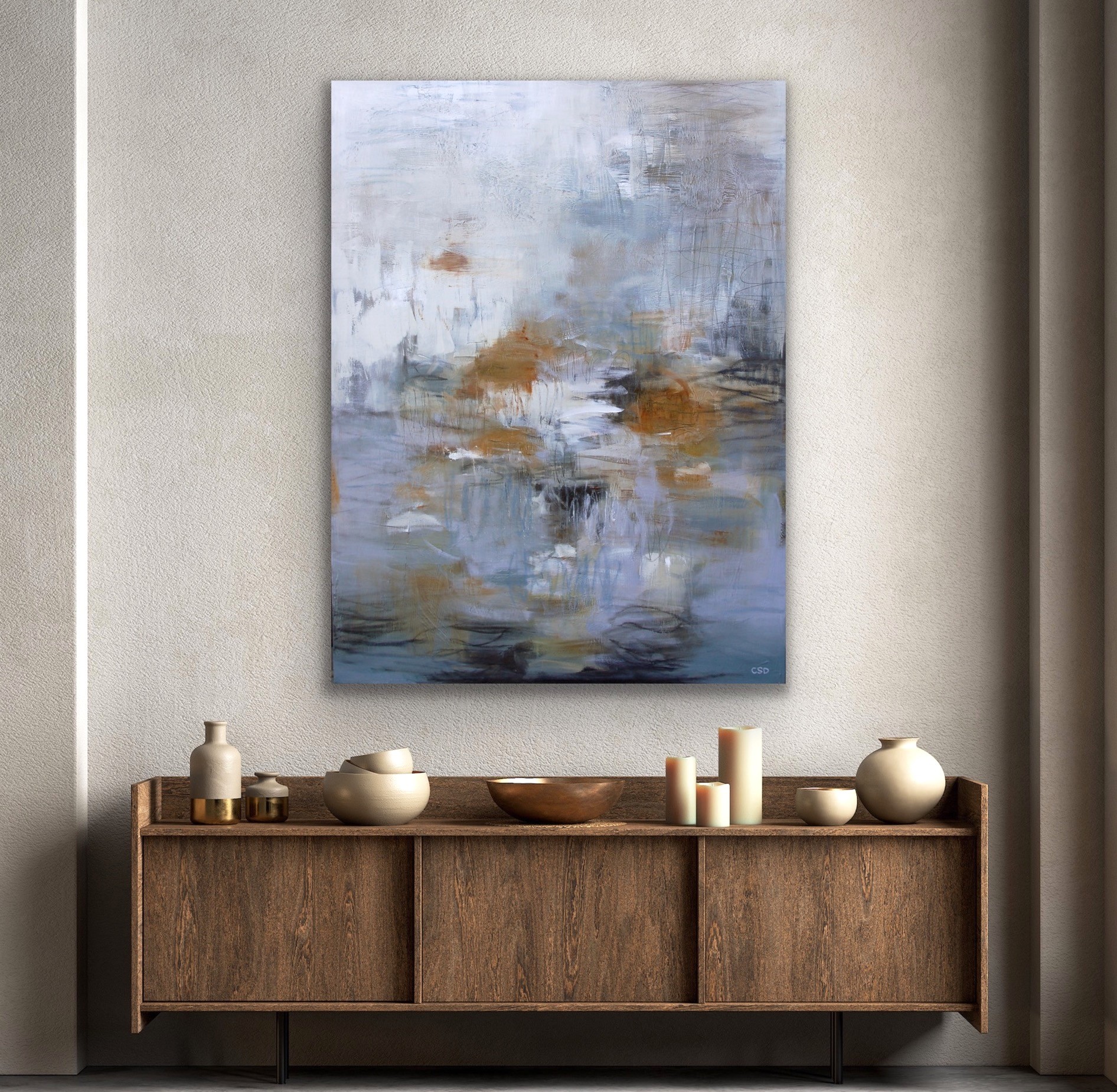
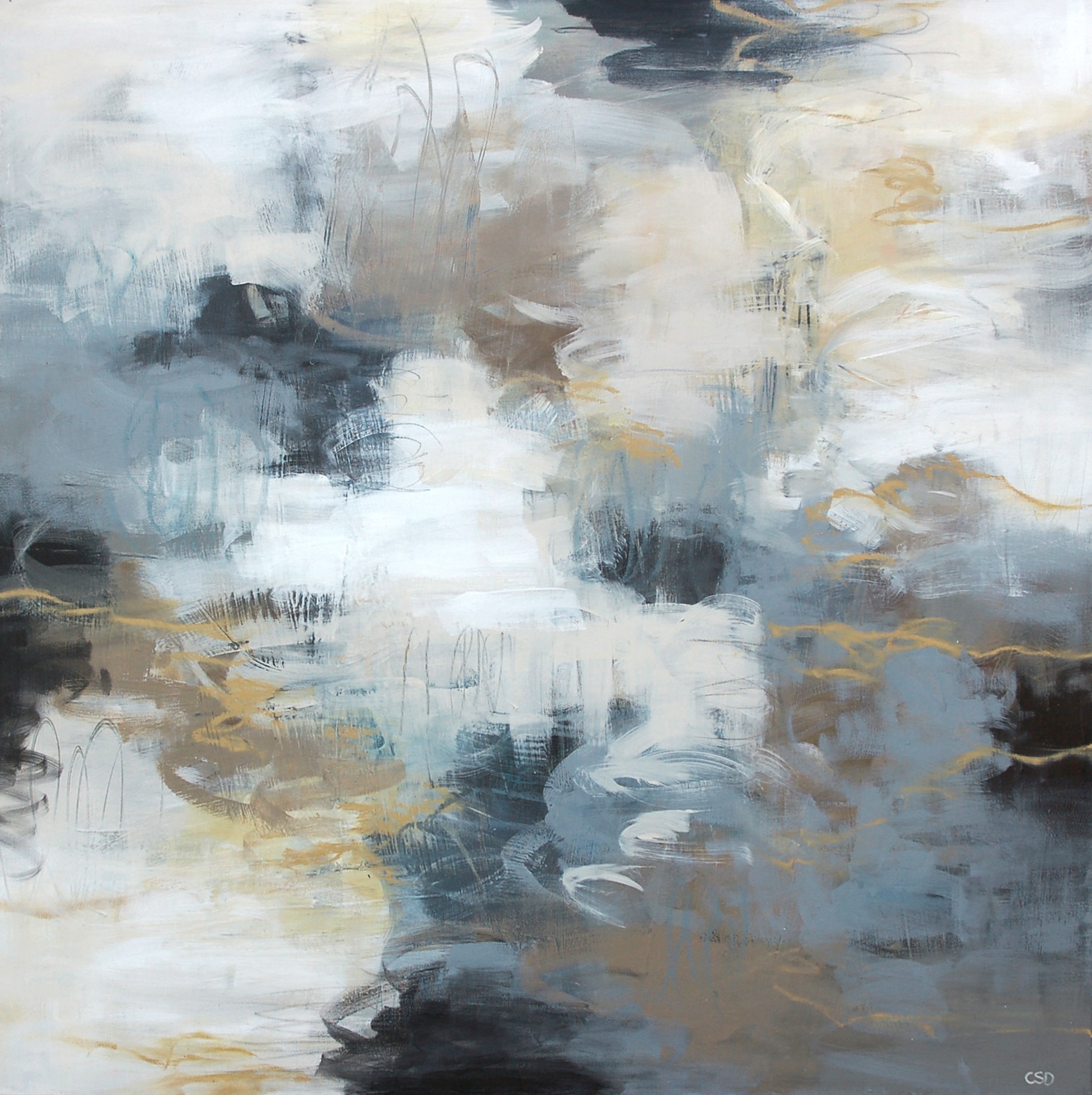

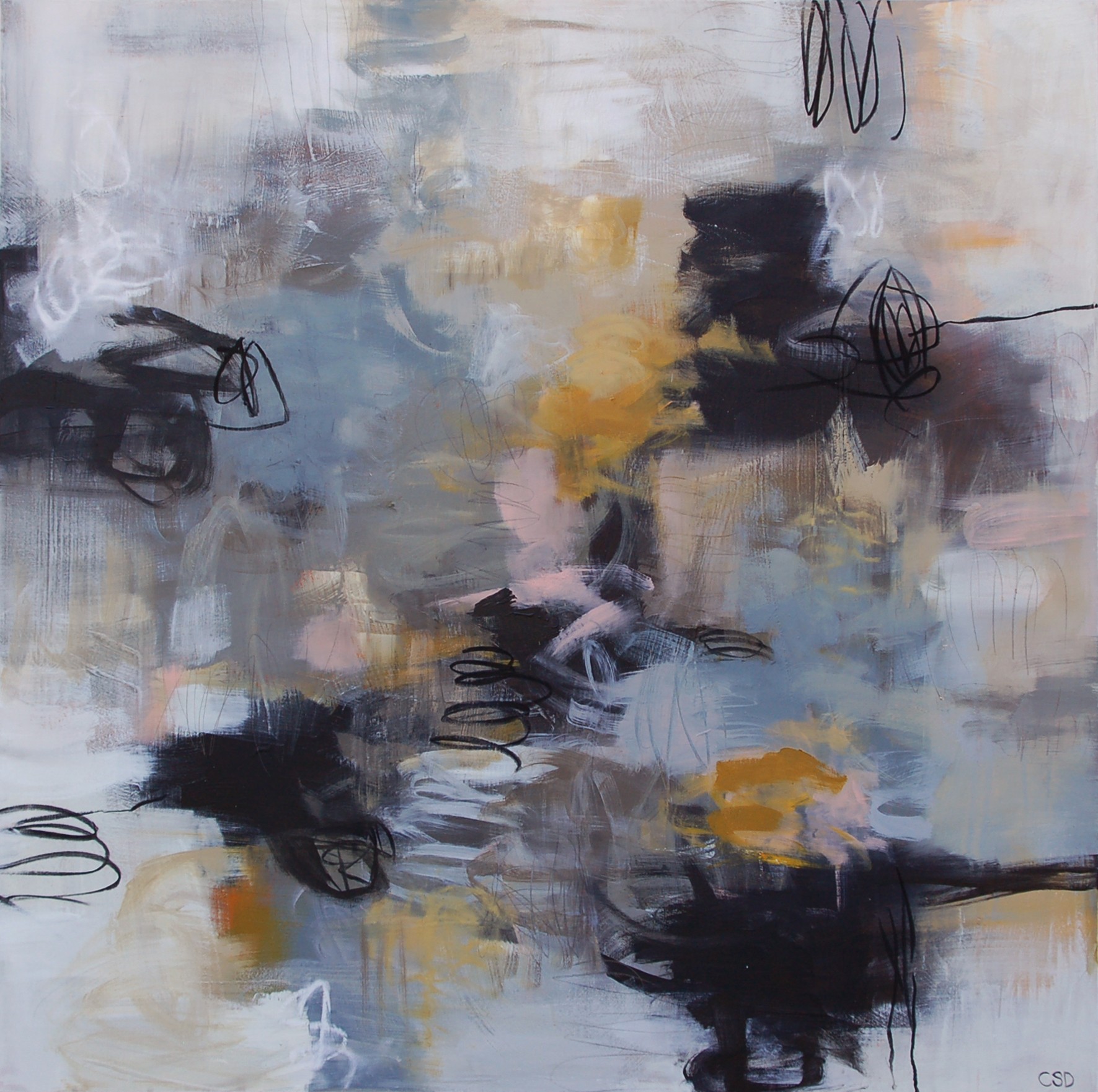
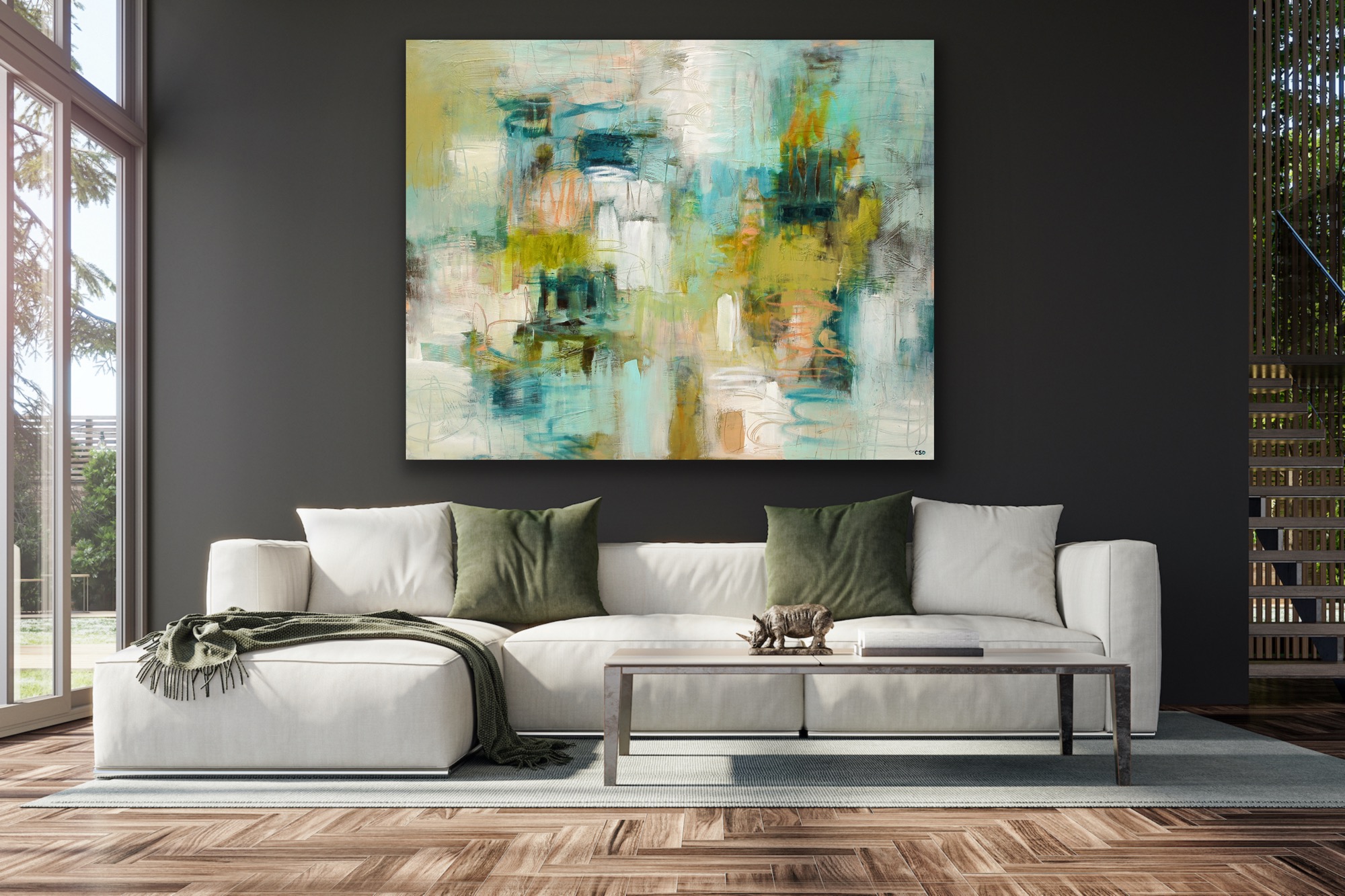

Image Credits
all by Christina Doelling


